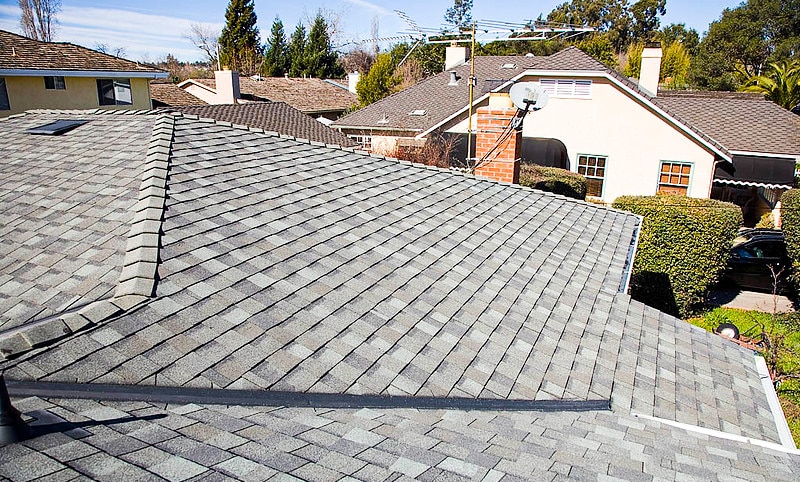You’re sitting in your cozy living room, sipping a warm cup of tea when you hear it – the soft patter of rain on your roof. Normally, this is a comforting sound, one that lulls you into a sense of security within the four walls of your home. But what if that comforting patter turns into an alarming drip-drip inside? A damaged roof can suddenly turn your safe haven into a source of stress. Don’t worry though! Understanding insurance claims for roof damage doesn’t have to be as daunting as it sounds.
Let’s face it; dealing with insurance claims can often feel like decoding ancient hieroglyphics. What does policy coverage mean? How do you file a claim successfully? And how do you navigate through repairs and aftermath without losing sleep (or patience)? We’ve got you covered.
This guide will walk you through everything from evaluating the extent of damage to preventing future issues with your roofing system. So grab another cuppa and keep reading because we’re about to make this process less overwhelming for you!
Evaluating the Extent of the Problem
Before you dive into the world of insurance claims, let’s take a moment to evaluate just how extensive your roof damage really is, shall we?
You don’t want to be caught off guard when dealing with adjusters and contractors. Start by carrying out a visual inspection of your roof. Look for signs such as missing shingles, discolored patches, or visible sagging areas. A pair of binoculars can come in handy here if you’re not too keen on climbing up there yourself.
After your initial assessment, you might want to consider bringing in the professionals for a more thorough evaluation. You see, some damages aren’t always apparent to the untrained eye – hidden leaks and water damage underneath the shingles are two prime examples.
A professional roofer has both experience and know-how to identify these issues accurately; plus they can provide an estimate on repair costs which can be instrumental while filing your claim. Remember though – this isn’t about rushing into anything; it’s about understanding what’s happening above your head so that no minor issue turns into a major headache later on!

Deciphering Your Policy Coverage
Cracking open your policy might feel a bit like deciphering hieroglyphics, but it’s not as tricky as it seems once you get the hang of the lingo.
You see, insurance companies have their own language, and learning to speak it is essential for understanding what is and isn’t covered under your policy. It might be tedious, sure; but trust me when I say that knowing whether ‘Actual Cash Value’ or ‘Replacement Cost Value’ affects your claims can make all the difference in navigating this process smoothly.
So grab a cup of tea or coffee, buckle up and dive deep into those pages.
Now let’s focus on some key terms:
‘Deductible’ – this is basically how much you’ll need to pay out of pocket before your coverage kicks in.
And then there’s “Exclusion,” which refers to anything not covered by your policy – something that could prove quite critical when dealing with roof damage claims.
Let’s take hail damage for example: if hail damage is listed as an exclusion in your policy details, then my friend, you’re out of luck and will have to foot the entire bill yourself!
It may feel overwhelming at first glance but remember—you’re not alone in this journey. Reach out to professionals if needed because after all, understanding these details can save you from needless headaches down the line.
Steps to Take Post-Damage
So, you’ve noticed a leak or maybe even lost a few shingles after that last storm, now what? Don’t panic! It’s time to roll up your sleeves and get down to business.
First things first, document everything. Get out there with your camera or phone and snap away at the damage. Be as thorough as possible because these photos will be invaluable when it comes time to file a claim. And don’t forget about the inside of your home, if water has seeped through and caused any interior damage, photograph that too.
Now that you’ve gathered all the evidence of the havoc wreaked by Mother Nature, it’s time to make some calls. Start with your roofing contractor – they can give you an estimate for repairs which is essential for your claim.
Next up is your insurance company – remember those pictures you took? Now’s their moment in the spotlight. Share them with your insurer when explaining what happened. This step might feel like another headache on top of dealing with roof damage but consider this: taking control right now could mean a smoother claims process later on – and isn’t peace of mind exactly what we all need when facing such challenges?
Successfully Filing Your Claim
Once you’ve documented all the mayhem, it’s time to roll up your sleeves and dive into the paperwork maze that is filing a claim.
It might seem daunting at first glance, but don’t fret! This process can be broken down into manageable steps.
First off, make sure you have a copy of your homeowner’s insurance policy handy. You’ll need to know what type of coverage you have and what the policy specifically covers when it comes to roof damage. If there are any clunky terms or jargon that leave you puzzled, reach out to your insurance agent for clarification – they’re there to help!
Next, notify your insurer about the damage as soon as possible – remember, promptness is key! Most insurance companies require homeowners to report damages within a certain timeframe in order for them to qualify for coverage.
Make sure you describe in detail how the damage occurred and provide photographic evidence where possible – every little bit helps in painting a clear picture of what went wrong.
Once you’ve submitted everything, sit tight and wait patiently for an adjuster from your insurance company who will assess the extent of the damage and determine how much compensation you’re eligible for. Yes, it seems like a lot on your plate right now but remember – every storm has its rainbow waiting just around the corner!
Navigating Aftermath and Repairs
Navigating the aftermath of a storm and tackling repairs can feel like a whole new whirlwind, but rest assured, you’ve got this! You’re not alone in this journey. It’s natural to feel overwhelmed, but remember, your insurance company is there to support you through it all.
From assessing damage to finding reliable contractors for roof repair or replacement, your insurer will guide you every step of the way. Be sure to keep them updated on any new developments and don’t hesitate to ask questions if something isn’t clear.
Once the dust settles and you’re ready for repairs, be selective about who touches your precious abode. Choose a reputable contractor who specializes in storm damage restoration – they’ll know exactly how to restore your roof back to its former glory while complying with all local building codes.
Take some time to do research; read reviews, check credentials, and ask for references before making a decision. Remember, this is your home we’re talking about – you deserve nothing less than top-notch service!
So take a deep breath and embrace the journey ahead – with patience and diligence, everything will soon fall into place again.

Avoiding Common Mistakes in the Process
After you’ve navigated the aftermath of roof damage and made necessary repairs, it might seem like you’re at the end of this arduous journey. However, there’s still a part where things can go awry if not handled correctly – the insurance claim process. It’s a phase filled with potential pitfalls that can hinder your chances of getting the full amount you deserve from your insurer.
Now let’s talk about avoiding these common mistakes in this critical stage.
First off, don’t rush into filing a claim without documenting every little detail about the incident and repair work carried out. Your smartphone is your best friend here – take photos or videos to give a visual backing to your claims.
Secondly, never understate or overstate damages; honesty is definitely the best policy when dealing with insurance companies.
Lastly, avoid settling immediately after receiving an offer from your insurer – remember that it’s their job to minimize payouts as much as possible. Consider reaching out to an independent appraiser for a second opinion on the cost of repairs or replacements before accepting any offer from your insurer.
These steps will help ensure that you get what you rightfully deserve while saving yourself from unnecessary headaches down the line.
Tips for Preventing Future Issues
Now, let’s shift gears and talk about how you can prevent any future issues. The health of your roof is in your hands, and with a little proactive care, you can save yourself a lot of headaches down the line.
Regular maintenance is key to preventing damage that could lead to an insurance claim. Start by getting your roof inspected at least once a year, preferably before storm season kicks off. This way, any potential weak spots can be identified and fixed before they become bigger problems.
Remember that it’s not just about what’s on top – gutters are also part of the equation! Keep them clean to ensure water drains away from your house properly, thus mitigating the risk of water damage to your roof or foundation.
Finally, trim overhanging branches regularly; they might look pretty swaying in the wind but could cause serious damage if they fall onto your roof during a storm. Prevention may seem tedious but trust me – it’s far less stressful than dealing with insurance claims for avoidable damages!


